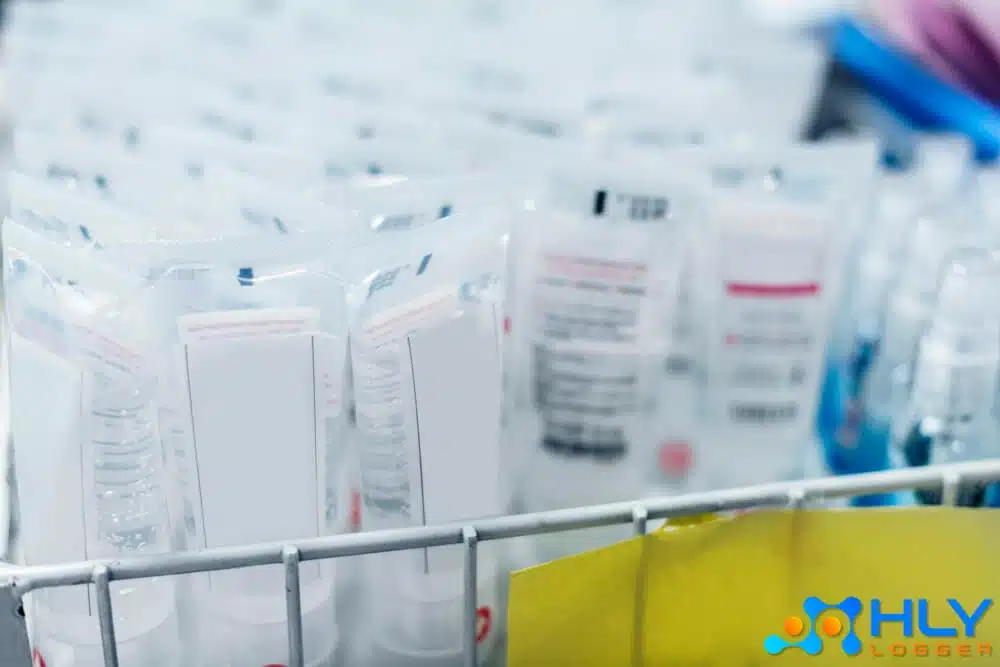Pharma cold chain logistics is among the most complex types of logistics, requiring detailed focus in its implementation. From the onset of mass production, the cold chain has dictated the ideal temperature requirements for this industry. Advanced temperature monitoring and sensing solutions, using sophisticated technology, ensure stability in laboratories and factories.
The temperature monitoring solution is a wireless device that includes a series of temperature sensors, humidity sensors, and wireless sensors with GPRS, Bluetooth, and NB-IOT technology. This technology also facilitates comprehensive data recording, supported by advanced firmware. Data loggers equipped with sensors help maintain product integrity during storage, distribution, and transportation to the customer.
Logistics personnel sometimes encounter temperature deviations that can significantly impact pharmaceutical companies. These issues must be addressed immediately, as many pharmaceutical products require temperature-controlled storage and distribution to preserve their efficacy and properties over time.
Contents
The Increasing Demand for Pharma Cold Chain Logistics
Challenges in Pharma Cold Chain Logistics
Good news often echoes within pharmaceutical companies and health therapy providers: there is increasing demand for various drugs and body cell therapies that can help patients manage chronic diseases. Additionally, health therapies promoting a healthier and more sustainable lifestyle require a range of minerals, antioxidants, and vitamins.
Pharmaceutical companies strive to provide pharma cold chain logistics capable of meeting these demands. However, they also face several challenges that can sometimes hinder their work. These challenges prompt companies to seek references on common and uncommon health issues, explore solutions for cold chain logistics from industry predecessors, and more.
Let’s examine some of the challenges faced in cold chain logistics:
Cold Chain Transportation
One of the most significant challenges in pharma cold chain logistics today is selecting the appropriate transportation method for medicines and pharmaceutical products. Many manufacturers believe that shipping most of their pharmaceutical products by sea is sufficient, considering it a favorable trend in cold logistics due to lower costs compared to air transportation.
These manufacturers often rely on temperature monitoring technology and data loggers from reputable suppliers. Sea and land transportation are safe options for temperature-sensitive pharmaceutical products in cold chain logistics if time is not critical. However, if consumers urgently need drugs or pharmaceutical products, air transportation is the most reliable option.
It’s important to note that air transportation historically experiences more frequent temperature fluctuations than land or sea transportation. Therefore, personnel must ensure that air shipments are equipped with high-quality data loggers.
Frozen Conditions
Another challenge in pharma cold chain logistics arises when products need to be shipped under frozen conditions, typically at temperatures colder than -15°C. This applies to biological products such as human organs and tissues.
Manufacturers usually ship frozen cargo for these products, but caution is necessary to ensure that items have not been thawed and refrozen. Laboratory tests should be conducted before using the product to verify its integrity.
Frozen cargo is typically transported by sea over long distances, but if the product is time-sensitive, air freight is the better option.
Cold Conditions
A crucial challenge involves shipping products under cold conditions, typically between +2°C and +8°C. These products must not be exposed to temperatures that are too warm or frozen during shipping. High-quality data loggers equipped with the latest technology are essential for quick evaluation in the event of a temperature deviation.
Implementing Compliance in Pharma Cold Chain Logistics
The management of a company’s pharma cold chain logistics must adhere strictly to regulatory guidelines. Healthcare or therapy services that utilize natural products sensitive to temperature changes must comply with global transportation standards.
The Food and Drug Administration (FDA) sets standards for the production, storage, and distribution of pharmaceutical products. These standards for the cold supply chain encompass transportation operations, labeling, packaging, personnel training, and record-keeping.
Meanwhile, the European Union’s Good Distribution Practices for Medicinal Products for Human Use (GDP) ensures manufacturer compliance in protecting the quality and integrity of pharmaceutical products. This compliance covers quality management systems, skilled personnel, facilities, equipment, documentation, and the qualifications of suppliers and customers.
Another organization that influences compliance with pharma cold chain logistics regulations is the International Air Transport Association (IATA). IATA sets standards for transporting pharmaceutical products by air, requiring manufacturers to adhere to the Temperature Control Regulation (TCR).
Products sensitive to time and temperature must be clearly labeled, and airlines must collaborate with ground handling agents on product acceptance checklists.
Adhering to the strict shipping standards in pharma cold chain logistics ensures the quality and safety of pharmaceutical products, medical devices, and therapeutic or healthcare products. Compliance with these regulatory standards is essential for protecting product quality.
Temperature Monitoring and Sensing Solutions
The use of technology to monitor temperature, record temperature changes, and measure humidity is crucial in pharma cold chain logistics. HLY Technology Co., Ltd. provides advanced temperature monitoring and sensing solutions that are vital for today’s pharma cold chain logistics.
Our wireless temperature monitoring solutions include a series of temperature sensors, humidity sensors, and wireless sensors utilizing GPRS, Bluetooth, NB-IOT technology, and advanced firmware. We offer practical solutions that can be applied across the life sciences, hospitals, manufacturing, and drug transportation within the pharmaceutical industry.
You can rely on our products to provide the best protection for the security and quality of your pharmaceutical products, ensuring consumer satisfaction.


